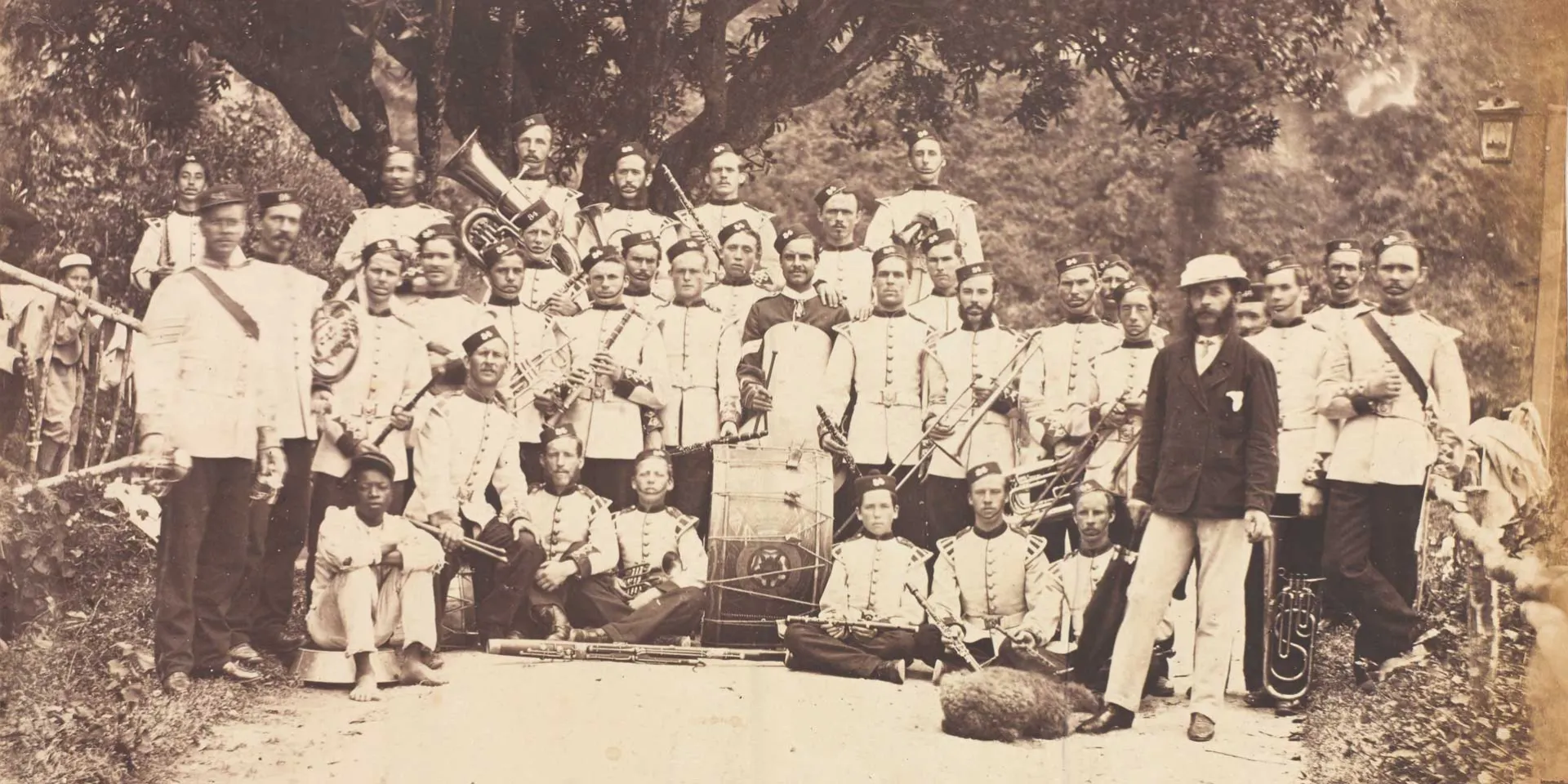
The band of the 84th (York and Lancaster) Regiment at Newcastle, Jamaica, c1868
Origins
This regiment was raised at York in 1793 following the outbreak of the French Revolutionary Wars (1793-1802). It was given the number 84 in the infantry order of precedence.
The following year, it raised a 2nd Battalion in Hull for service in Ireland, while its 1st Battalion was sent to the Netherlands, taking part in the unsuccessful Flanders campaign.
Early deployments
In 1795, both battalions were posted to the Cape of Good Hope. They merged there before moving on to Madras (now Chennai) three years later. The regiment then stayed in India until 1819, fighting in the Third Maratha War (1817-19).
During this lengthy deployment in India, the 84th sent detachments to serve alongside East India Company forces on the island of Perim in the Red Sea and to Aden. Its men also took part in the capture of the island of Mauritius in 1810.
York and Lancaster
In 1808, the regiment raised a 2nd Battalion again, this time at Preston in Lancashire. The following year, it was renamed the 84th (York and Lancaster) Regiment of Foot, recognising the distinct origins of its two battalions.
The new 2nd Battalion fought in the Walcheren Expedition (1809) where it suffered heavy losses from fever. Later, it served during the final years of the Peninsular War (1808-14), seeing action at Bidassoa, Nivellle and Nive in 1813. The following year, it moved to garrison Cobh in Ireland.
Both battalions were back in England by 1819, when they were merged once more into a single unit. However, the regiment’s dual origins continued to be recognised. In 1820, it was granted the Union rose, which combines the white rose of York with the red rose of Lancaster.
The 84th served in Ireland from 1819 to 1825, followed by two years in England. In 1820, detachments of the regiment escorted convicts bound for Van Diemen's Land (Tasmania) and New South Wales. A further detachment took part in the expedition to the Bay of Islands in New Zealand in 1821.
In 1827, it was sent to Jamaica to suppress slave revolts, before returning home 11 years later.
Victorian period
It spent most of the 1840s and 1850s in Burma and India, and was still on the subcontinent when the Indian Mutiny (1857-59) broke out. Soldiers of the 84th Foot were involved in the besieged garrison of Lucknow as well as the force sent to relieve it. Only one of the 60 men it sent to Cawnpore survived the campaigning there.
The regiment left India in 1859, spending the next six years in England and Ireland. It was then sent to Malta in 1865 before returning to garrison Jamaica in 1867. Its final overseas posting, to Nova Scotia in 1870, lasted only a year.
Legacy
The unit spent its final decade alternating between Ireland and England. Then, in 1881, it was amalgamated with the 65th (2nd Yorkshire, North Riding) Regiment of Foot to form The York and Lancaster Regiment.
Regimental museums
The National Army Museum works with a network of Regimental and Corps Museums across the UK to help preserve and share the history and traditions of the Army and its soldiers.
Discover more about the 84th (York and Lancaster) Regiment of Foot by visiting Clifton Park Museum in Rotherham.











